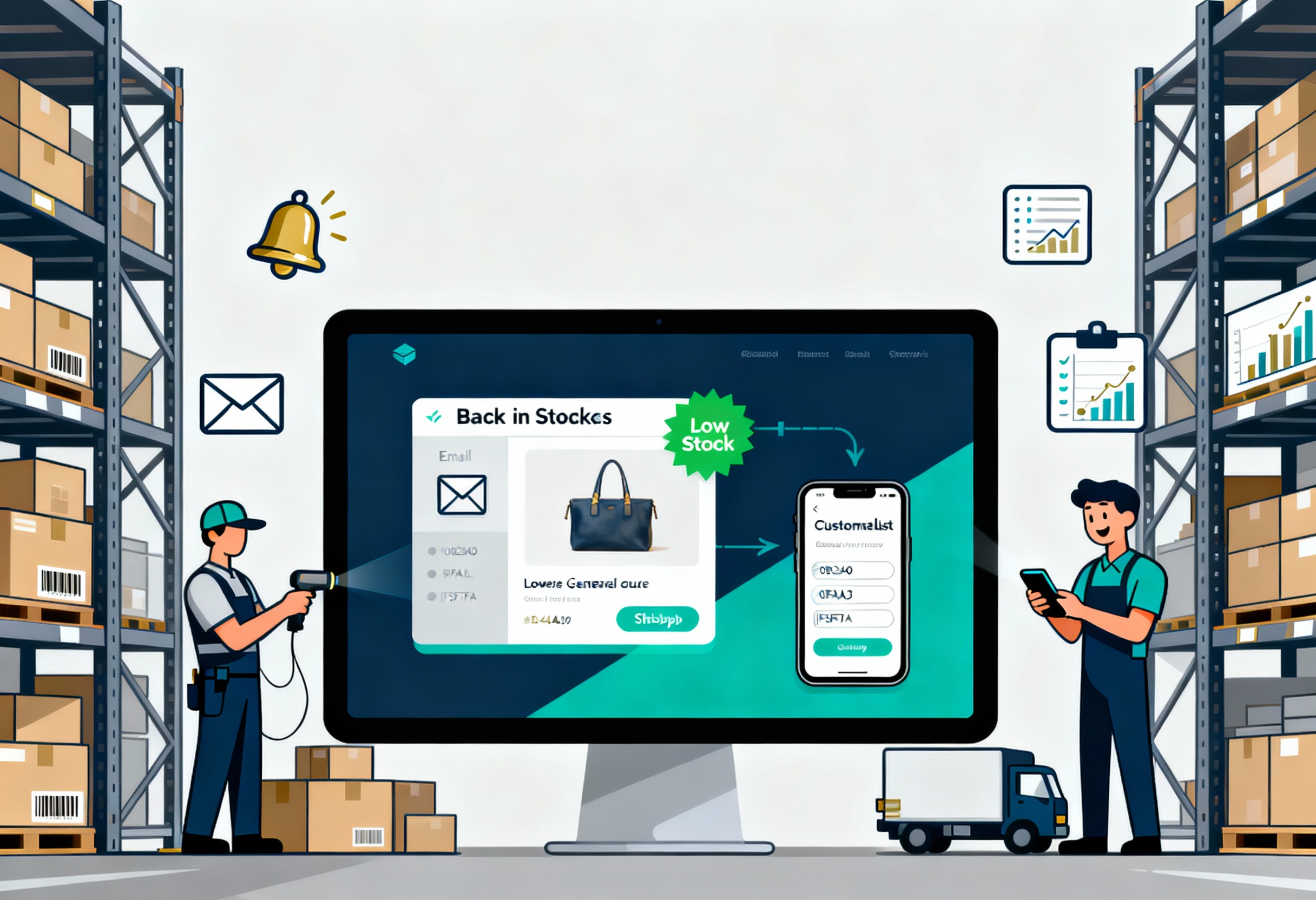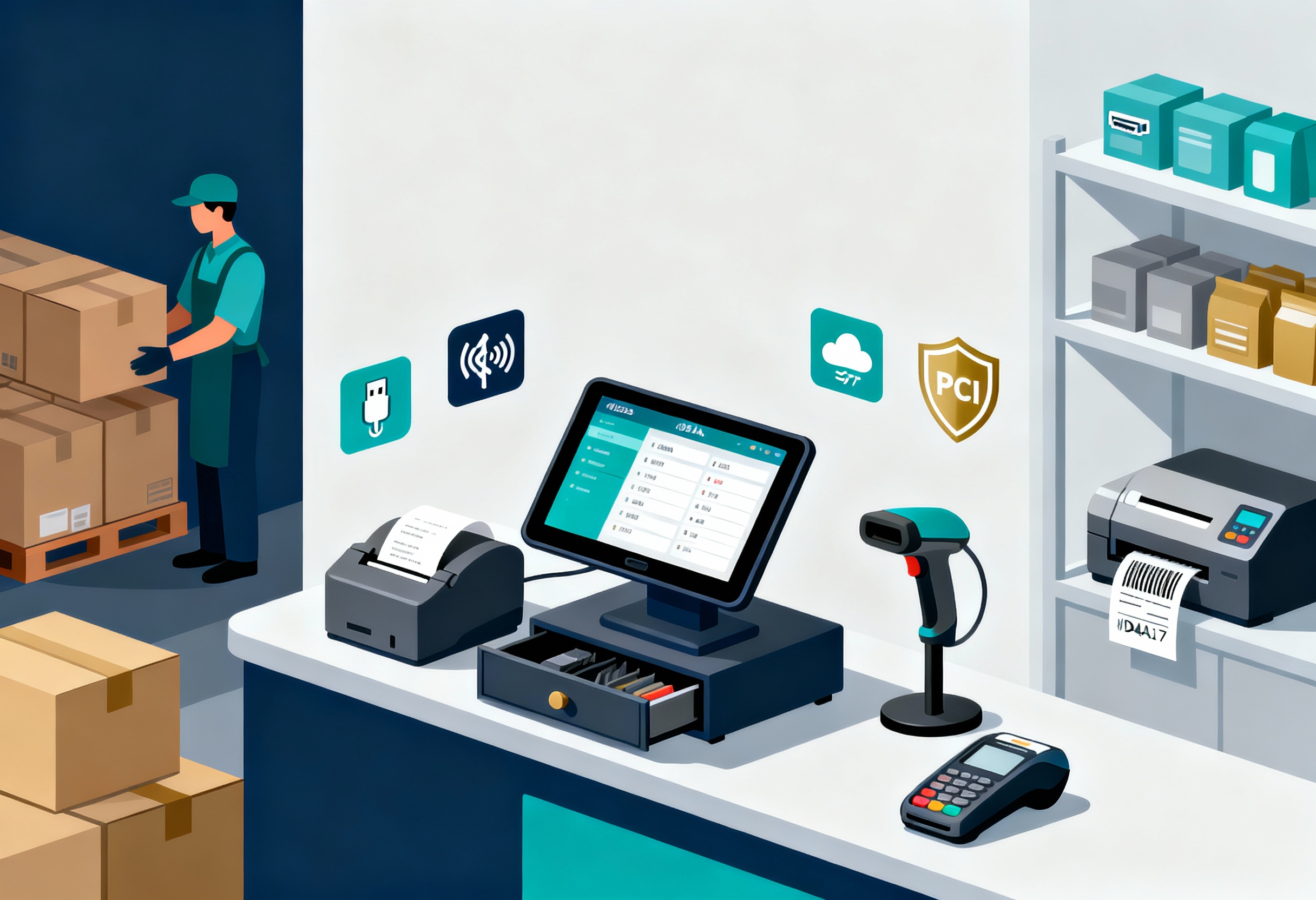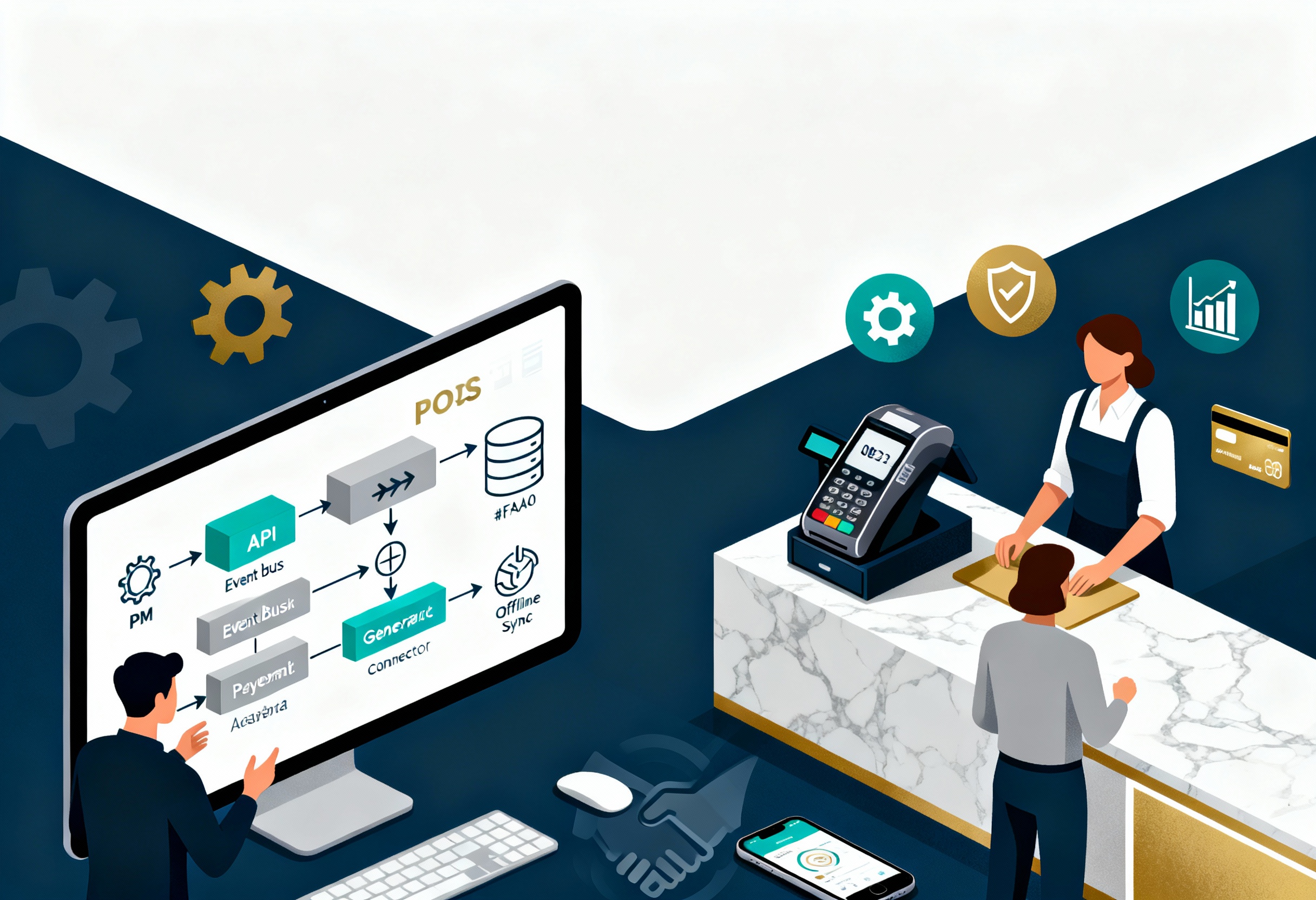Are you on the lookout for a pơerful solution that can streamline your business operations and help you forge strong connections with your customers? If so, investing in a POS loyalty system might just be the brilliant move you’ve been searching for. In today’s fast-paced and competitive market, businesses need more than just efficient payment processing. They need a tool to keep customers coming back for more. A top-notch POS loyalty system does exactly that by rewarding customer loyalty, boosting repeat sales, and creating personalized shopping experiences.
Highlight:
- Automate customer tracking and reward calculations, reducing manual tasks and labor costs.
- Offer personalized rewards and exclusive offers to foster customer loyalty and increase repeat visits.
- Stand out in the market with a robust loyalty program that builds deeper connections with your customers.
What is a POS Loyalty System?
A POS loyalty system is a built-in feature of your POS software that tracks customer purchases and rewards them for coming back. It lets you set up loyalty programs where customers can earn points, discounts, or special perks, giving them more reasons to shop with you again. These systems don’t just boost sales—they help keep customers loyal by offering rewards that feel personal.
With a POS loyalty system, you can easily manage customer data, track their buying habits, and send out tailored promotions. It’s a simple yet powerful way to strengthen customer relationships and keep them coming back for more.
Why Loyalty Programs Matter for Modern Businesses
Now we learned about the POS loyalty system, let’s explore further why such programs are absolutely crucial for businesses:
- Customer Retention: It’s significantly more cost-effective to retain existing customers than to acquire new ones. Loyalty programs incentivize repeat purchases by offering rewards, discounts, or exclusive benefits.
- Building Brand Loyalty: Loyalty programs nurture a deeper connection between a brand and its customers. With consistently rewarding loyal customers, you can enhance emotional attachment to their brand.
- Personalized Customer Experience: With the data gathered from loyalty programs, you understand customers’ preferences, purchase habits, and needs much better.
- Increased Customer Lifetime Value (CLV): Loyal customers tend to spend more over time. An effective loyalty program encourages frequent purchases and higher spending, boosting the overall customer lifetime value.
- Competitive Advantage: In a crowded market, having a strong loyalty program can differentiate a brand from its competitors. Customers are more likely to stick with a brand that consistently rewards their loyalty, especially when other brands don’t offer similar incentives.
Potential Issues with Running a Loyalty System (+Tips to Avoid)
Running a loyalty system can be a wonderful strategy to retain customers and increase engagement. But like any other approach, there are several potential issues that can arise, which may hinder the program’s success.
Low Customer Engagement
- Issue: One of the most significant challenges with loyalty programs is low participation. If customers don’t find the rewards valuable or the program too complicated, they may lose interest quickly. Without regular engagement, the loyalty system fails to achieve its intended purpose.
- Tip: Make the loyalty program easy to understand and participate in. Offer meaningful rewards that are aligned with customer preferences. Providing a variety of rewards, such as discounts, exclusive access, or experiential perks, can help cater to diverse customer interests.
Difficulty in Retaining Interest Over Time
- Issue: Even if a loyalty program initially attracts attention, maintaining customer interest over the long term can be challenging. Customers may become bored with the same rewards or may not see enough value in continuing to participate.
- Tip: Continuously evolve the loyalty program by introducing new rewards, seasonal offers, or limited-time bonuses. Regular updates help keep the program fresh and exciting, encouraging customers to stay engaged. Tiered rewards can also motivate customers to aim for higher-value benefits over time.
Inefficient Reward Structures
- Issue: A poorly designed reward structure can result in customers feeling that rewards are too difficult to earn, leading to frustration and disengagement. On the other hand, if rewards are too easy to obtain, the business might not see a significant return on investment (ROI).
- Tip: Find a balance between rewarding customers and protecting the business’s profitability. Use data to design a reward structure that matches the spending patterns of your target audience. Rewards should be achievable but not so easily earned that they lose their perceived value.
Fraudulent Activity
- Issue: Loyalty programs can sometimes be abused by customers trying to game the system, such as creating multiple accounts or exploiting referral bonuses. Fraud not only increases program costs but also undermines its integrity.
- Tip: Implement security measures to detect and prevent fraud. This could include limiting the number of accounts per customer, verifying accounts through email or mobile numbers, and monitoring for unusual activities like rapid point accumulation.
Data Privacy Concerns
- Issue: Loyalty programs often require customers to share personal information, which raises concerns about data privacy. Mishandling or leaking customer data can damage a business’s reputation and lead to legal repercussions.
- Tip: Ensure that the loyalty program complies with data protection regulations such as GDPR or CCPA. Communicate transparently about how customer data will be used and safeguard it through encryption and other security protocols. Prioritize customer trust by giving them control over their data and allowing them to opt out if they choose.
High Maintenance Costs
- Issue: Running a loyalty program can be expensive, especially if the costs of rewards and system management outweigh the benefits. Small businesses, in particular, may struggle with the financial burden of maintaining an extensive program.
- Tip: Focus on creating a cost-effective loyalty system. Consider partnering with third-party providers to reduce administrative costs, and offer non-monetary rewards like early access to products or exclusive content.
Lack of Personalization
- Issue: Generic loyalty programs that fail to tailor rewards or offers to individual customers’ preferences may result in disengagement. Customers expect personalized experiences and are less likely to participate in programs that don’t reflect their unique needs.
- Tip: Leverage customer data to offer personalized rewards and recommendations. Use segmentation to target different customer groups based on their purchasing behavior, ensuring that each customer feels valued.
5 Reasons to Invest in A POS Loyalty System Soon
A POS loyalty system helps solve common challenges in retaining customers. If you’re still on the fence, here are 5 strong reasons to invest now:
Lower Labor Costs
A POS loyalty system automates many time-consuming tasks, such as tracking customer purchases and calculating rewards. This reduces the need for manual data entry, freeing up staff to focus on more valuable activities like customer service.
For example, instead of manually updating loyalty points, staff can dedicate more time to improving customer service or upselling products. Automation also cuts down on human errors, helping you avoid costly mistakes.
Better Inventory Management
With real-time insights from an integrated POS system, you can better manage your inventory by tracking which items are selling well.
Loyalty data adds another layer, showing trends in customer preferences so you can stock up on the right products for your top customers. If your most loyal customers consistently buy a specific item, you’ll know to prioritize that in your reorders.
Comprehensive Analytics and Reporting
A POS loyalty system offers detailed reports on sales trends, customer demographics, and shopping patterns. From these reports, you’d be able to refine your marketing strategies and focus on high-value customers.
Let’s say the analytics reveal that a segment of your loyal customers frequently shop during specific seasons. Then you should target them with tailored promotions via email, social, etc. during those times.
Enhanced Customer Experience
Loyalty programs integrated into your POS provide a smooth experience for customers, allowing them to track points and redeem rewards easily. Personalized rewards, such as exclusive discounts or early access to sales, create a more engaging shopping experience that keeps them coming back.
The most common practice of this is offering birthday rewards to loyal customers. Such a simple move would make them feel valued and encourage repeat business.
Service-Centered Marketing
A POS loyalty system assists in the creation of targeted marketing campaigns based on customer preferences. Think of personalized promotions, discounts, or even product recommendations, which make customers feel appreciated and more likely to engage with your brand.
Your marketing team may consider reaching out to customers who haven’t visited in a while with exclusive offers, and also remind them of the value your loyalty program provides.
ConnectPOS is a comprehensive point-of-sale solution designed to help businesses streamline operations across multiple channels. Understanding business’s desire to retain customers, ConnectPOS delivers a loyalty program that increases repeat purchases. It tracks customer spending, assigns rewards, and allows you to create custom promotions based on customer behavior. The system supports tiered loyalty levels and works seamlessly across in-store and online sales. With its integration options, you can extend its features to match your unique business needs, making it a flexible tool for building long-term customer relationships.
FAQs: POS Loyalty System
- Can a POS loyalty system integrate with my current POS software?
Yes, most modern POS loyalty systems are designed to integrate seamlessly with existing POS software. However, compatibility varies by system, so it’s important to ensure that the loyalty software supports your POS platform to avoid any technical issues.
- What are some common challenges businesses face with POS loyalty systems?
Common challenges include low customer engagement, complex reward structures, and difficulty in maintaining the program’s profitability. Other issues may include managing data privacy and preventing fraudulent activity. Regularly updating the system and keeping the rewards relevant can help overcome these challenges.
- How can I measure the success of my POS loyalty program?
Success can be measured by tracking key metrics such as customer retention rates, average order value (AOV), and customer lifetime value (CLV). Analyzing customer engagement levels, loyalty program participation rates, and the impact on overall sales can also indicate how well the program is performing.
Conclusion
With implementing a well-designed loyalty program, you can foster brand loyalty, increase repeat sales, and provide personalized experiences that keep customers coming back. Therefore, let’s invest POS loyalty system to enhance customer relationships and drive long-term success.
If you’re ready to take the next step, ConnectPOS offers seamless integration and robust features tailored to your business needs. Contact us today to learn how we can help elevate your loyalty program!



